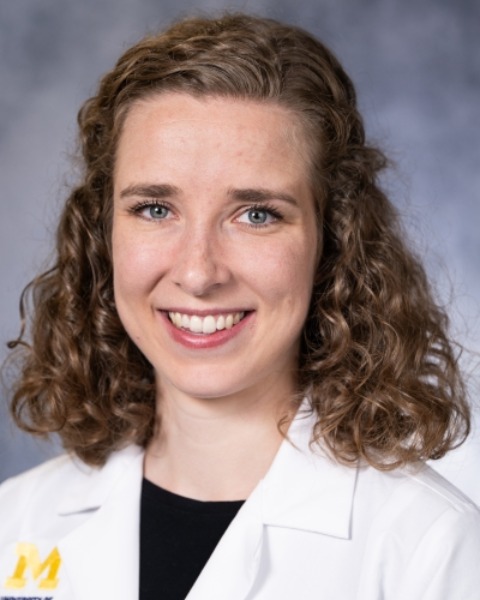Poster Session 2
(479) Inequities in Postpartum Opioid Prescribing by Race-Ethnicity and Insurance Status Across Statewide Quality Collaborative

Ellery G. Sarosi, MD
Resident
University of Michigan Medical Center, Department of Obstetrics and Gynecology
Ann Arbor, MI, United States
Joshua S. George, MD, MPH
Physician Fellow
University of Michigan
Ann Arbor, Michigan, United States- KL
Kyle Latack, MD
Resident
University of Michigan Medical Center, Department of Obstetrics and Gynecology
Ann Arbor, Michigan, United States - SA
Steven Ater, DO
Central Michigan University
Central Michigan University, Michigan, United States 
Michelle Moniz, MD, MSc (she/her/hers)
Associate Professor
University of Michigan
Ann Arbor, Michigan, United States
Lisa Kane Low, CNM, PhD (she/her/hers)
University of Michigan
Ann Arbor, Michigan, United States
Molly J. Stout, MD, MSCI (she/her/hers)
Division Chief for Maternal Fetal Medicine, Associate Professor of Obstetrics and Gynecology
University of Michigan Medical Center
Ann Arbor, Michigan, United States
Jourdan E. Triebwasser, MA, MD (she/her/hers)
Clinical Associate Professor
University of Michigan
Ann Arbor, Michigan, United States- JW
Jennifer Waljee, MD
University of Michigan
Ann Arbor, Michigan, United States - VG
Vidhya Gunaseelan, MBA, MHA, MS
Clinical Information Analyst Staff Specialist
University of Michigan
Ann Arbor, Michigan, United States - MB
Mark Bicket, MD, PhD
University of Michigan
Ann Arbor, Michigan, United States 
Courtney Townsel, MD
Assistant Professor
University of Maryland Department of Obstetrics, Gynecology and Reproductive Sciences
Baltimore, Maryland, United States
Alex Peahl, MD, MSc (she/her/hers)
Michigan Medicine
Ann Arbor, Michigan, United States
Submitting Author and Presenting Author(s)
Coauthor(s)
Study Design:
Retrospective cohort study of nulliparous, term, singleton, vertex births from 1/1/2023-10/13/2023 in a clinical registry from 71 hospitals participating in a quality improvement collaborative supported by Blue Cross Blue Shield of Michigan. Eligible patients had a VB or CB, were ≥ 18 years, and did not have a history of opioid use, postpartum length of stay ≥ 7 days, maternal transfer to another hospital, and invalid or incomplete opioid prescription data. Patients who underwent repair of a 3rd or 4th degree laceration, hysterectomy, or dilation and curettage were also excluded. We report adjusted opioid prescribing rates by race-ethnicity and insurance status, stratified by mode of delivery. Discharge opioid prescribing after VB without additional procedures was rare, and without inequities. In contrast, discharge opioid prescribing following CB was common, and higher among historically marginalized groups.
Results: Of 14,690 VB, 87.4% (n=12,837) had a spontaneous VB without additional procedures, of whom 1.1% (n=146) received an opioid prescription. There was no significant difference in receipt of an opioid prescription based on race-ethnicity or insurance after VB. Of 5,957 CB, 99.7% (n=5,938) had a CB without additional procedures, of whom 89.2% (n=5,298) received an opioid prescription. Following CB, NHB patients were more likely to receive an opioid prescription compared to NHW patients (Table 1; NHB: OR 1.57, 95% CI 1.16-2.12). Patients with Medicaid were more likely and patients without insurance or self-pay patients were less likely to receive an opioid prescription compared to privately insured patients (Table 1; Medicaid: OR 1.30, 95% CI 1.05-1.62; Self-pay/None: OR 0.43, 95% CI 0.20-0.93).
Conclusion:

